Showing 613–624 of 2529 resultsSorted by popularity
-
Sale!

Cauliflower 6 Pack Tray
Original price was: R60.00.R49.99Current price is: R49.99.Add to cartCauliflower 6 Pack Tray
We have a new range of 6 pack vegetable and herb plants on offer.
The stock of these changes daily so we will inform you should your item be suddenly out of stock.Happy Gardening!!
-
Sale!

Baby Spinach 6 Pack Tray
Original price was: R60.00.R49.99Current price is: R49.99.Add to cartBaby Spinach 6 Pack Tray
Growing your own vegetables offers numerous benefits, both for your health and overall well-being. Here are some of the key advantages of cultivating your own vegetables:
1. Nutritional Value: Homegrown vegetables are incredibly fresh and packed with essential nutrients. They are harvested at their peak, ensuring optimal nutritional value. You have control over the cultivation methods, allowing you to avoid pesticides or other harmful chemicals.
2. Health and Wellness: Consuming homegrown vegetables promotes a healthier lifestyle. They are typically richer in vitamins, minerals, and antioxidants, which can boost your immune system, improve digestion, and lower the risk of chronic diseases such as heart disease and certain cancers.
3. Cost Savings: Growing your own vegetables can save you money in the long run. The initial investment in plants, soil, and tools may be modest, and the ongoing expenses are significantly lower compared to purchasing fresh produce from the market. Plus, you can grow a variety of vegetables at a fraction of the cost of buying them.
4. Taste and Flavour: Homegrown vegetables often have superior taste and flavour compared to store-bought produce. You can pick them at the peak of ripeness, allowing you to savour the true essence of each vegetable. The freshness and flavours of your homegrown vegetables can enhance your culinary experiences.
5. Environmental Sustainability: Cultivating your own vegetables promotes sustainable practices. By growing your food locally, you reduce the carbon footprint associated with long-distance transportation, packaging waste, and the use of harmful chemicals. Additionally, you can compost kitchen scraps and organic waste, minimizing landfill contributions.
6. Physical Activity and Stress Relief: Gardening is an excellent form of physical activity. It involves various tasks like digging, planting, weeding, and harvesting, which can provide exercise for your body. Engaging in gardening activities can also be therapeutic, reducing stress, anxiety, and promoting relaxation.
7. Educational and Skill Development: Growing your own vegetables offers a valuable learning experience for both children and adults. It allows you to understand the importance of sustainable agriculture, appreciate the effort involved in food production, and gain knowledge about plant biology and gardening techniques. It can also encourage a sense of responsibility and patience.
8. Food Security: Having your own vegetable garden contributes to food security. It provides you with a reliable source of fresh produce, reducing dependence on external suppliers. In times of emergencies or disruptions in the food supply chain, you can rely on the sustenance from your homegrown vegetables.
9. Aesthetics and Connection with Nature: Growing vegetables adds beauty to your surroundings. A well-maintained garden can enhance the aesthetics of your home and create a peaceful environment. It allows you to reconnect with nature, appreciate the seasons, and gain a sense of accomplishment.
Overall, growing your own vegetables offers a multitude of benefits, including improved nutrition, cost savings, environmental sustainability, physical activity, and a deeper connection with nature. It’s a rewarding endeavour that can positively impact your health, well-being, and overall quality of life.
-
Sale!

Celtis Sinensis 20lt (Chinese Hackberry)
Original price was: R550.00.R415.00Current price is: R415.00.Add to cartCeltis Sinensis 20lt (Chinese Hackberry)
Full Sun
Medium Watering
Drought Resistant
Exotic Tree
DeciduousCeltis sinensis is commonly known as Chinese Hackberry and is a species of flowering tree in the Cannabaceae family. It is native to various regions in East Asia, including China, Japan, Korea, and Taiwan. This deciduous tree is known for its adaptability and has been introduced and cultivated in other parts of the world as an ornamental tree.
Appearance: Chinese Hackberry is a medium-sized tree that can grow up to 10-20 meters in height. It has a rounded crown and a moderately spreading canopy. The bark is grey to light brown, and the branches are often covered with corky ridges.
Leaves: The leaves are alternate, simple, and have a serrated or toothed margin. They are typically ovate or elliptical and have a glossy green colour. In the fall, the leaves turn yellow or yellow-green before shedding.
Flowers: The tree produces small, inconspicuous greenish flowers in spring, usually in April or May, depending on the region. The flowers are not showy, but they are an essential food source for pollinators.
Fruits: After flowering, Celtis sinensis develops small, round, berry-like fruits that ripen to a dark purple or black colour. These fruits are often eaten by birds, contributing to seed dispersal.
Habitat: Chinese Hackberry is adaptable to various soil types and can tolerate a range of environmental conditions, including both moist and dry sites. It is commonly found in woodlands, forests, and along riverbanks.
Uses: Celtis sinensis is valued as an ornamental tree in landscapes and urban areas due to its attractive foliage, interesting bark texture, and adaptability to urban conditions. It can be planted as a shade tree, street tree, or in parks and gardens.
-
Sale!
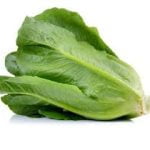
Lettuce Green Cos 6 pack
Original price was: R60.00.R49.99Current price is: R49.99.Add to cartLettuce Green Cos 6 pack
Growing your own vegetables offers numerous benefits, both for your health and overall well-being. Here are some of the key advantages of cultivating your own vegetables:
1. Nutritional Value: Homegrown vegetables are incredibly fresh and packed with essential nutrients. They are harvested at their peak, ensuring optimal nutritional value. You have control over the cultivation methods, allowing you to avoid pesticides or other harmful chemicals.
2. Health and Wellness: Consuming homegrown vegetables promotes a healthier lifestyle. They are typically richer in vitamins, minerals, and antioxidants, which can boost your immune system, improve digestion, and lower the risk of chronic diseases such as heart disease and certain cancers.
3. Cost Savings: Growing your own vegetables can save you money in the long run. The initial investment in plants, soil, and tools may be modest, and the ongoing expenses are significantly lower compared to purchasing fresh produce from the market. Plus, you can grow a variety of vegetables at a fraction of the cost of buying them.
4. Taste and Flavour: Homegrown vegetables often have superior taste and flavour compared to store-bought produce. You can pick them at the peak of ripeness, allowing you to savour the true essence of each vegetable. The freshness and flavours of your homegrown vegetables can enhance your culinary experiences.
5. Environmental Sustainability: Cultivating your own vegetables promotes sustainable practices. By growing your food locally, you reduce the carbon footprint associated with long-distance transportation, packaging waste, and the use of harmful chemicals. Additionally, you can compost kitchen scraps and organic waste, minimizing landfill contributions.
6. Physical Activity and Stress Relief: Gardening is an excellent form of physical activity. It involves various tasks like digging, planting, weeding, and harvesting, which can provide exercise for your body. Engaging in gardening activities can also be therapeutic, reducing stress, anxiety, and promoting relaxation.
7. Educational and Skill Development: Growing your own vegetables offers a valuable learning experience for both children and adults. It allows you to understand the importance of sustainable agriculture, appreciate the effort involved in food production, and gain knowledge about plant biology and gardening techniques. It can also encourage a sense of responsibility and patience.
8. Food Security: Having your own vegetable garden contributes to food security. It provides you with a reliable source of fresh produce, reducing dependence on external suppliers. In times of emergencies or disruptions in the food supply chain, you can rely on the sustenance from your homegrown vegetables.
9. Aesthetics and Connection with Nature: Growing vegetables adds beauty to your surroundings. A well-maintained garden can enhance the aesthetics of your home and create a peaceful environment. It allows you to reconnect with nature, appreciate the seasons, and gain a sense of accomplishment.
Overall, growing your own vegetables offers a multitude of benefits, including improved nutrition, cost savings, environmental sustainability, physical activity, and a deeper connection with nature. It’s a rewarding endeavour that can positively impact your health, well-being, and overall quality of life.
-

Rocket Wild 6 pack
R49.99Add to cartRocket Wild 6 pack
We have a new range of 6 pack vegetable and herb plants on offer.
The stock of these changes daily so we will inform you should your item be suddenly out of stock.Happy Gardening!!
-
Sale!
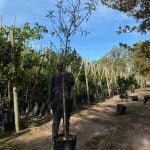
Almond Tree (Prunus Dulcis) 40lt
Original price was: R1,150.00.R895.00Current price is: R895.00.Add to cartPrunus Dulcis 40ltCommon Name: Almond Tree
Full Sun
Semi ShadeMedium Watering
Grow to about 4m-6m in height with pink/white flowers in Spring. They fruit after flowering and the fruit will then mature and open up to reveal the nut which is covered by a hard shell.
Remember you will need to plant 2 of the same type for proper fruiting otherwise the tree may not bear fruit.
-
Sale!
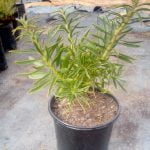
Leucospermum Succession 15cm Pot
All Plants, Full Sun Plants, Indigenous Plants, Leucospermum Plants (Pincushions), Small Plants On Sale, Water Wise PlantsOriginal price was: R195.00.R139.99Current price is: R139.99.Add to cartLeucospermum Succession 15cm Pot
Common Name: PincushionFull Sun
Afternoon Sun
Indigenous
Low Watering
Evergreen
Drought ResistantLeucospermums like to be grown in sunny spots. Can tolerate sandy, rocky soil but also rich well drained soil.
Flowering from Spring to Winter these are amazing plants when flowering that will attract sun birds, bees and butterflies into your garden. -
Sale!

Hyacinths Bulbs-White
Original price was: R110.00.R84.99Current price is: R84.99.Add to cartPRE ORDERS ARE OPEN FOR WINTER BULBS. LIMITED STOCK AVAILABLE! STOCK TO ARRIVE MID TO END MARCH 2025!
Hyacinths Bulbs-White
3 Bulbs per pack
Semi ShadeHyacinths are true bulbs that grow to about 20cm in height. They can grow in most soils as long as it is well-drained to avoid roots from rotting. Plant these bulbs a little bit deeper than normal bulbs to avoid the sun from damaging the bulb.
Hyacinth will flower for a longer period if left outside at night for the cold air. If they do not receive enough light, the stems will stretch.Available: March April May
Plant: April May June
Flower: July August SeptemberLead time of about 7 working days for our bulbs to come from the suppliers!
-
Sale!
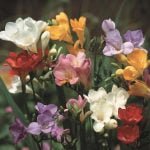
Freesias-Mixed Regular
Original price was: R150.00.R119.99Current price is: R119.99.Add to cartPRE ORDERS ARE OPEN FOR WINTER BULBS. LIMITED STOCK AVAILABLE! STOCK TO ARRIVE MID TO END MARCH 2022!
Freesias-Mixed Regular
50 Bulbs per pack of assorted colours
Full Sun
Semi ShadeFreesia are indigenous to South Africa and consist of 16 different species. The plants are easy to grow and have a strong scent. If planted in full sun the stems will remain short and if planted in semi shade it will cause the stems and stretch out taller and may require you to add some support to them. Protection from heat will extend the life of the plant. They grow to about 40cm in height and can be a feature when planted in a mixture of colours into a bed.
Available: March April May
Plant: April May June
Flower: August SeptemberLead time of about 7 working days for our bulbs to come from the suppliers!
-
Sale!

Freesias-Yellow
Original price was: R120.00.R95.00Current price is: R95.00.Add to cartPRE ORDERS ARE OPEN FOR WINTER BULBS. LIMITED STOCK AVAILABLE! STOCK TO ARRIVE MID TO END MARCH 2025!
Freesias-Yellow
30 Bulbs per pack
Full Sun
Semi ShadeFreesia are indigenous to South Africa and consist of 16 different species. The plants are easy to grow and have a strong scent. If planted in full sun the stems will remain short and if planted in semi shade it will cause the stems and stretch out taller and may require you to add some support to them. Protection from heat will extend the life of the plant. They grow to about 40cm in height and can be a feature when planted in a mixture of colours into a bed.
Available: March April May
Plant: April May June
Flower: August SeptemberLead time of about 7 working days for our bulbs to come from the suppliers!
-
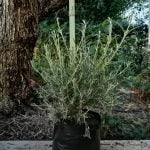
Buddleja Saligna 10lt
R295.00Add to cartBuddleja Saligna 10lt
Common Name: False OliveFull Sun
Medium Watering
Bulb Plant
Drought Resistant
IndigenousBuddleja saligna, commonly known as the False Olive or White Olive, is a species of flowering shrub or small tree belonging to the Buddlejaceae family. It is native to southern Africa, specifically found in countries such as South Africa, Mozambique, and Zimbabwe.
Appearance: The False Olive is a fast-growing evergreen shrub or small tree that can reach heights of about 5 to 10 meters. It has a dense, rounded canopy and pendulous branches.
Leaves: The leaves are lance-shaped or elongated, measuring around 5-12 cm in length. They are dark green on the upper side and have a silvery or greyish appearance on the lower side.
Flowers: The shrub produces fragrant, small, tubular, creamy-white flowers that are arranged in slender, elongated clusters. These flower clusters can be quite attractive to butterflies and other pollinators.
Fruit: After flowering, Buddleja saligna develops small, woody capsules containing tiny seeds.
Habitat: The False Olive is well-adapted to a variety of habitats, from coastal areas to rocky slopes and open woodlands. It is also common in disturbed areas and can be considered a pioneer species.
Uses: In some regions, Buddleja saligna has been used for various purposes. For example, the wood is occasionally used for furniture, and the leaves and bark have traditional medicinal uses. The plant is also valued for its role in attracting wildlife, particularly butterflies and birds, making it a popular choice in gardens and landscapes for biodiversity and wildlife conservation.
-
Sale!

Bokashi Starter Kit Special
Original price was: R695.00.R495.00Current price is: R495.00.Add to cartBokashi Starter Kit Special
The special comes with2 x 25lt Bokashi Bucket Digesters
1 x 2kg Bokashi Mix
With Bokashi you can compost all food incl meat, fish, eggs, any food and there are no rotting smells as the bran starts the fermentation process and the smell should be that of a beer process.
Each kitchen will need 2 x Bokashi food waste digesters (bins) and a bag of Bokashi Mix.Once the first bin is full it is set aside for a 2 week fermentation period.
Thereafter the contents are buried, composted or fed to a worm farm where it breaks down to soil within weeks.
They include an internal strainer (to separate the leachate from the food waste) and a tap to enable the tapping off the beneficial fermented Bokashi juice.This liquid can be used as a powerful liquid fertiliser for plants.
100% South African producedBokashi food waste recycling digesters are made from recycled plastic.
HOW THE PROCESS WORKS!1) Place ½ cup of Bokashi Mix into the bucket.
2) Add daily food waste to the bin. The process works best when large pieces are chopped into smaller pieces. The size of a golf ball is the maximum size guideline.
3) Sprinkle Mix over the food waste – approximately 2 tablespoons per 5cm of food waste. Double that if adding very fatty foods, meat, fish or dairy.
4) Compact the food waste down to eliminate any excess air and keep the lid tightly sealed.
5) If there is a lot of liquid, siphon some off using the tap. This liquid can be diluted (approx. 300:1) to feed plants or poured down drains to keep them unblocked.
6) When the bin is ¾ full, sprinkle another ½ cup of mix on top and allow the bucket to stand for 2 weeks.
After 2 weeks the bucket can be emptied and turned into your flower beds. The liquid can be diluted to feed plants and flowers.
Liquid fertiliser can be diluted as follows:1:100 for lawns.
1:300 for gardens and pot plants.
1:500 for succulents.
1:1000 for any sensitive plants.
Do not use the liquid fertiliser on Fynbos as it does not like to be fertilised and the Bokashi Juice is too acidic.
